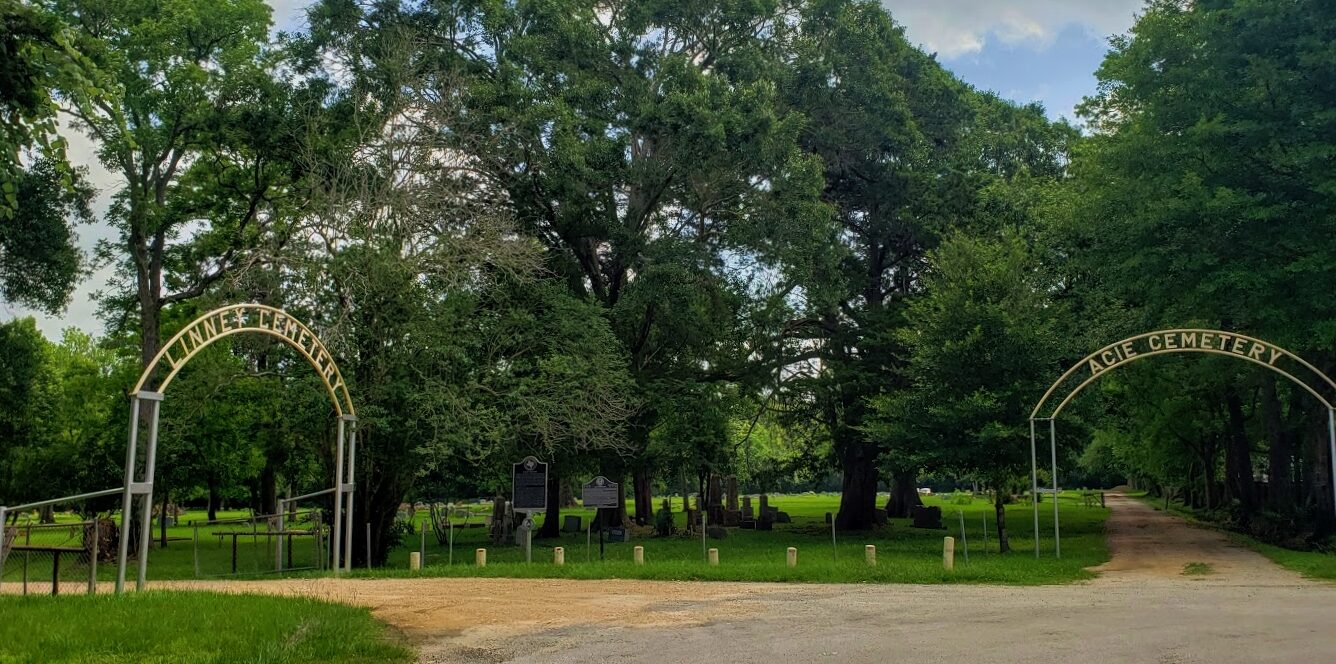Nothing gives better insight into a people’s history and culture than the way in which they memorialize the deceased.
Our History
The Linney and Acie Cemeteries, operated by the Linney-Acie Cemetery Association (LACA), are long regarded as two of the oldest, most stunning park-like burial grounds in Dayton, Texas. They have served the community for over 172 years, operating as separate but equal. Their uniquely American heritage is an essential piece of the United State’s history, designating them as Historic Texas Cemeteries. The burial grounds had been racially segregated since their opening in the mid-1800s. Each cemetery was operated separately, white and black, with their respective caretakers. Finally, in 2019, one new Association became responsible for the two cemeteries. The grounds feature several unusual and elaborate grave markers, including tree trunk-shaped monuments of the Woodmen of the World Lodge, some 19th-century fraternal organizations, and many hand-carved headstones of grave markers that serve as a directory of early Liberty County residents. The once-dirt roads leading into the burial grounds intersect at the eastern end of Linney Street and the northern end of Colbert Street. One must proceed straight through the metal arches for Acie Cemetery or turn left to enter Linney Cemetery off East Linney Street.
1903 Linney Cemetery Association held its first meeting in the back of the Old Simmon store in Dayton. Those in attendance were Mrs. Ritter, Dr. and Mrs. JD Spear, Henry Hemnoff, Mrs. WM Babcock, Coleman Simmons, James M Linney, and his wife. Mrs. Linney presided as the first President of the Association.
1907 Joe Linney deeds a one-acre burial plot to the Linney Cemetery Association.
1922 Dayton School District gifted twelve acres to the Linney Cemetery Association, currently taking care of the grounds.
1928 Acie Cemetery Club President Aaron Day, Sr., petitioned the Linney Cemetery Association to grant access to the burial ground, form their Association, and continue to manage the upkeep of the all-black cemetery. Past presidents were Rufus Dugat, S.S. Wycliff, Haywood Walker, Lee Love, and Bennie Prater.
1988 While it is a prominent local landmark, the Linney and Acie Cemetery gained wider recognition with its designation as a Historic Texas Cemetery, reflecting the area’s early heritage and reminding us of pioneer life in Liberty County.
2019 The Association members’ vote was the final step in the merger process to create the new cemetery association.
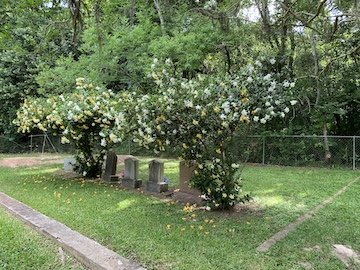
The Old Alford Graveyard is a humble one-acre lot in the northeast corner of Linney burial grounds purchased by Joe Linney from Henry and Susan Hemnoff in 1896. “Uncle Joe” Linney deeded this one-acre lot to the Linney Cemetery Association in 1907 and specified the lots for indigent and abandoned loved ones. Dr. JP Alford lived adjacent to the section that carried his name, and several of his descendants are buried there in unmarked graves. The oldest known marked grave in this section is Joseph Monroe Linney, a child, six days old, who was born and died in 1880.
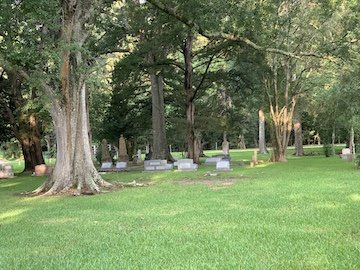
The Smith Cemetery is tucked sweetly on the southwest entrance between Linney and Acie. Little information is available about this graveyard besides its first unmarked burial Jane Francis Hunt, who died in 1881. The oldest marked grave in this section is Marie Louise Schneider Gossie, mother of James Linney, in 1885.
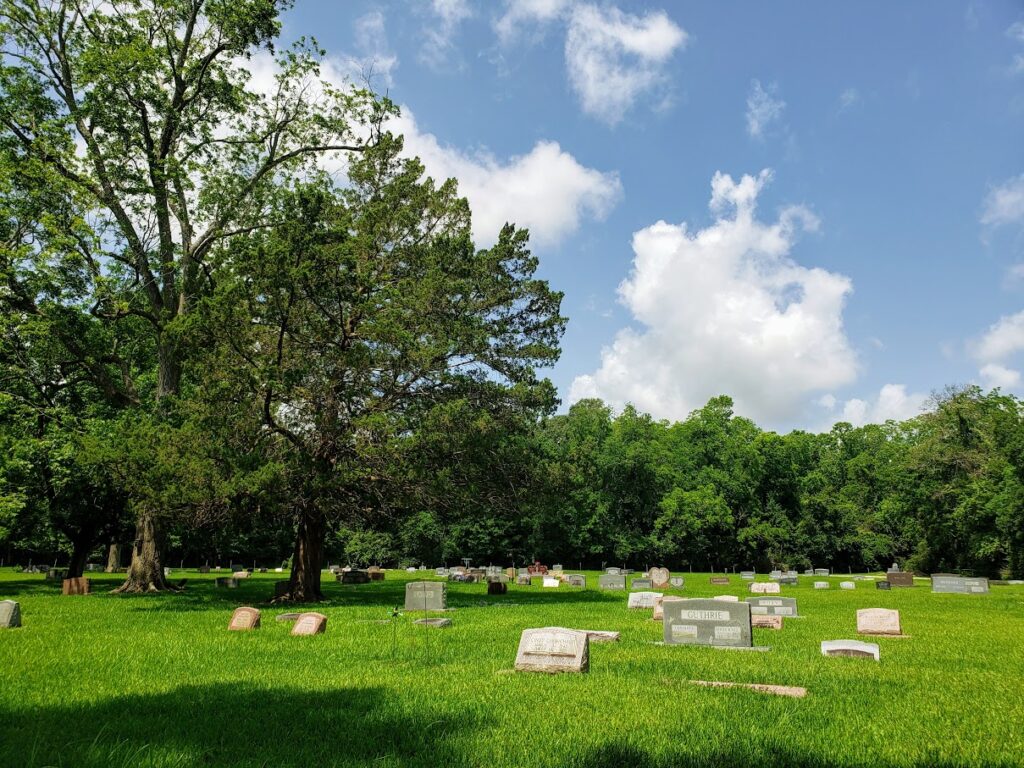
In 1842 Michael and Elizabeth Linney moved their family to Liberty County, Texas, acquiring vast agricultural land in West Liberty (now Dayton). Elizabeth died in 1862, and Michael succumbed in 1871. Although Michael and Elizabeth did not choose Linney as their final resting place, many of their descendants reside here. A substantial number of unmarked graves outlined the four separate parcels of the burial grounds throughout the property. These sections were later named after the families interred there, such as Linney, Acie, Alford, and Smith. It is unclear if the graveyard derived its name from the Linney family’s strong roots in the community or the first Linney burial.
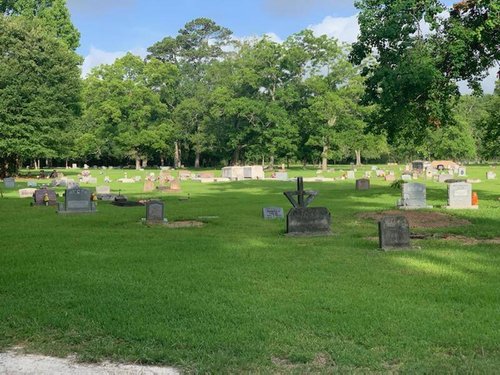
Acie Cemetery, located on the original twelve acres, is one of the area’s most significant burial grounds for Black Americans in Dayton. This Graveyard commemorates Acie (Asa) Richardson, who arrived in Liberty County with his wife Phyllis circa 1867. The family later purchased twelve acres adjacent to an all-white graveyard in 1888. Acie’s burial site lies here in an unmarked grave. This sacred resting place encapsulates four small sections and numerous marked and unmarked burials. The oldest recorded grave was “Malinda Day” in 1894. Acie dug graves for the deceased’s family of the dead and looked after the site until he died in 1912.
Residents of Dayton and other nearby communities continue to choose their final resting place in one of our historic family cemeteries. With donations of additional lands since our founding, the Linney and Acie Cemeteries now comprise thirteen picturesque acres. All of the lots in the Alford and Smith Cemeteries are sold and entrusted to the Linney Cemetery.
